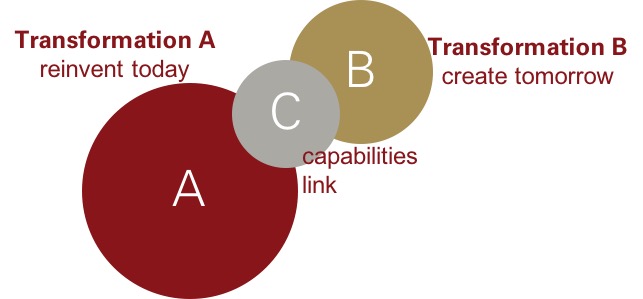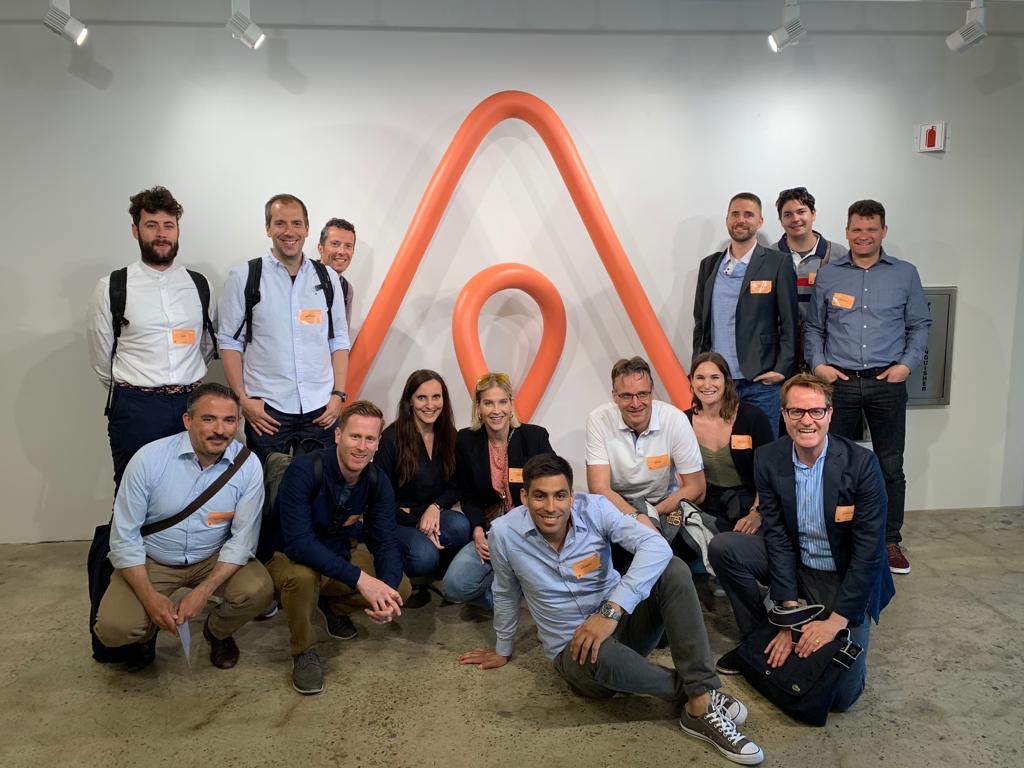7 Takeaways for Digital Leaders
By André Meister, Partner at NOVO Business Consultants, a leading IT consultancy and SAP partner in Switzerland (first published at HWZ Digital. translated from German by Gert Christen).
7 personal takeaways after completing HWZ University’s graduate certificate (CAS) in “Digital Leadership” and a study tour to Silicon Valley.
#1 A fundamental shift of power
Hierarchical leadership models are defunct. Today’s complex services are delivered by highly networked businesses that possess the most diverse set of competencies. Digital leaders are capable of leading different experts and teams in virtual organizations, and they recognize the potential of diversity in people such as gender, cultural background, personality, age, skills, and experience.

#2 Traits of a good leader
The following dimensions define Digital Leadership according to Fiorucci & Nast:
- Vision: Have a clear vision. It is all about trust and safety. The next intermediate goal lies no more than 3 to 6 months into the future.
- Clear values: As a leader, I must have clear values of my own, and I must be seen living them. I must help others to define their values and to transform values into behavior.
- Role model: Walk the talk, integrity, keep promises.
- Be present: A physical presence allows for security and enables composure. A mental presence enables active listening. Employees expect to be backed up. Must live a culture of failure tolerance.
- Develop employees: Recognize their strengths & potential. Support their uniqueness and deploy it optimally. Work to diminish weaknesses if they cause collateral damage (to the employee, to the team, to the customer).
- Communication: Give both positive and negative feedback. Communicate again and again and again…
- Justness and due process: Presence creates a baseline trust, which is essential for the perception of justice. Provide clear rules and comply with the rules.
- Expert knowledge: Some is expected from digital leaders. Work with team leaders as sparring partners.
- Self-reflection: I can delegate, I know my limits mentally, psychologically, and physically. Am I listening to myself and my body? Do I like myself the way I am?
#3 Fast, agile and flexible organizations
Organizations today are optimized for stable and efficient processes. The challenge for digital leaders is to shape organizations for success in the VUCA-environment (Volatile, Uncertain, Complex, Ambiguous) to be fast, agile and flexible while at the same time be as efficient as possible. The digital transformation is not primarily about technology; it is about changing the DNA of leaders, employees, and organizations.
#4 Dual transformation
Traditional business segments are frequently under attack and in danger of being substituted by large tech companies. The core business (A) is still earning good money and at the same time, the new business segments of tomorrow (B) must be built up. New competencies, skills, and markets are ideally created outside of the core organization. And at the same time, it is crucial to connect the existing capabilities of the core business with the newly acquired ones to create the link (C) from today’s organization to the value-creating business models of tomorrow (=Transformation).

#5 Being good enough is not enough
How did the builders of tall ships respond to the arrival of steamships? They built tall ships with even more sails – an approach of more of the same. However, they still were not able to match the speed of steamships – powered by disruptive steam engine technology. It is not good enough to aim for 10% better in our strategies, decisions, and actions. In our ambition, we must strive for 10x better. A fundamental change in our mindset!
#6 Success factors of digital businesses
The 10 most important success factors of Silicon Valley tech companies according to Mark Zawacki:
- Global platforms: Don’t build single applications, but entire business platforms. Platforms can use network effects (e.g. see WhatsApp) and change the behavior of users.
- Fusion: Combine “old” and “new” functionalities
- Open organizations: Make (some) results of R&D efforts public instead of keeping everything a secret. Get feedback fast this way.
- Disruptive hypothesis: Rethink the existing hypotheses and business models and rethink them “differently.”
- Build pilots & prototypes: Test new hypotheses, learn fast, increase competitiveness.
- Use assets owned by others: Rent resources instead of buying them.
- World-class in data science: Everything is quantified and data-driven.
- Customer leadership: Use design thinking and customer experience management to find customer needs and to develop solutions.
- Finances: CFOs should not be involved with innovation teams. They ask for a return on investments too early, blighting new ideas.
- Pace und decision making capability: A sense of urgency is vital to help ideas and innovations to breakthrough.
#7 Entrepreneurship is a process
Entrepreneurship is a process and not a sudden flash of inspiration or of good ideas.
The following traits are crucial for entrepreneurship: Naivety, endurance, culture, “chutzpah” (a Yiddish word describing a mixture of goal-oriented and intelligent outrageousness, charming obtrusiveness and irresistible audacity) – Bettina Hein, 2019


Pingback: Gert’s Digigram Newsletter of September 2019! – Gert Christen.org
Pingback: 7 Takeaways of what constitutes Leadership in a digitalized business world – Gert Christen.org